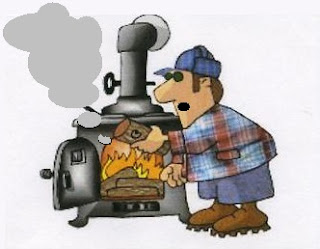A survey of households that use wood for heating showed that a large majority of users had experienced smoke spillage at least once. Smoke spillage can be reduced or eliminated through good system design and proper appliance operation.
The smell of wood smoke can be pleasant to some, but inside your home it’s a sign that the wood burning system is not functioning properly. The smoke contains harmful air pollutants which can be irritating or even dangerous in high concentrations. Properly designed, installed and operated wood burning systems do not spill smoke into the house.
There are three main reasons why some wood burning systems smoke:
1. Bad system design: There are design characteristics that can make a wood burning system more likely to spill smoke. Most of these characteristics result in low flue temperature and low draft. Outside wall chimneys and long flue assemblies before exhaust reach the chimney are just a couple.
2. Extreme negative pressure in the house: Energy efficiency practice and new building code rules are making our houses more and more air tight. This makes the house energy efficient, but also makes them sensitive to depressurization when air is exhausted from the house. Other exhaust appliances used in the house can cause extreme negative pressure in the house when they are operating.
3. Improper woodstove firing technique: When a wood fire is starved for air it smolders, producing a relatively cool, smoky fire. The temperatures throughout the system are low. During a smoldering fire, the chimney will not be receiving the hot gas it needs to produce strong draft.
And remember, when refueling first open the by-pass before opening the firebox door.


No comments:
Post a Comment